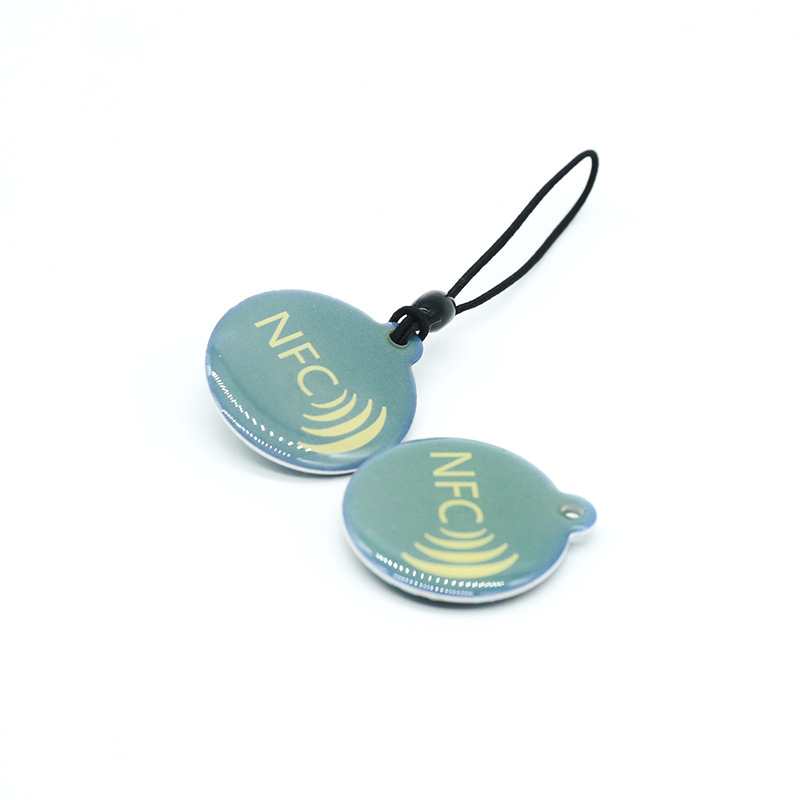Introduction
In the realm of Near Field Communication (NFC) technology, the choice between different NFC chips can significantly impact the performance and capabilities of your NFC-enabled products. Two popular NFC chips in the market, namely the iCode SLIX2 and NTAG213, offer unique features and functionalities catering to diverse application requirements. In this comprehensive guide, we delve into the intricacies of these NFC chips to help you make an informed decision for your NFC projects.
iCode SLIX2 NFC Chip
The iCode SLIX2 NFC chip, developed by NXP Semiconductors, stands out with its advanced capabilities and robust performance. Built upon NXP’s ICODE SLI platform, the SLIX2 chip boasts enhanced memory capacity, superior read/write speeds, and heightened security features, making it an ideal choice for a wide range of applications.
Key Features:
- Extended Memory Capacity: With up to 896 bytes of user memory, the iCode SLIX2 chip offers ample storage space for storing diverse data sets, including URLs, contact information, and product details.
- High-Speed Data Transfer: Leveraging advanced protocols and optimized circuitry, the SLIX2 chip facilitates swift data transmission, ensuring seamless user experiences across NFC-enabled devices.
- Enhanced Security: Equipped with robust encryption algorithms and authentication mechanisms, the iCode SLIX2 chip provides reliable protection against unauthorized access and data tampering, safeguarding sensitive information and transactions.
NTAG213 NFC Chip
The NTAG213 NFC chip, manufactured by NXP Semiconductors, is renowned for its simplicity, versatility, and cost-effectiveness. Designed for ease of integration and widespread adoption, the NTAG213 chip caters to various NFC applications, ranging from product authentication to marketing campaigns.
Key Features:
- Plug-and-Play Functionality: With its user-friendly interface and intuitive operation, the NTAG213 chip simplifies NFC implementation, allowing for seamless integration into existing infrastructures and applications.
- Cost-Efficiency: As a budget-friendly option, the NTAG213 chip offers a compelling value proposition for projects with stringent budget constraints, enabling cost-effective deployment across diverse use cases.
- Wide Compatibility: The NTAG213 chip is compatible with a myriad of NFC-enabled devices, including smartphones, tablets, and NFC readers, ensuring broad interoperability and ease of use for end-users.
Comparison: iCode SLIX2 vs. NTAG213
When comparing the iCode SLIX2 and NTAG213 NFC chips, several factors come into play, including memory capacity, data transfer speed, security features, and cost considerations. While both chips offer unique advantages, the choice ultimately depends on your specific application requirements and budget constraints.
Memory Capacity
- iCode SLIX2: Up to 896 bytes of user memory, suitable for applications requiring extensive data storage and customization.
- NTAG213: Limited to 144 bytes of user memory, ideal for straightforward applications with basic data storage needs.
Data Transfer Speed
- iCode SLIX2: Offers enhanced read/write speeds, facilitating rapid data exchange and seamless user interactions.
- NTAG213: Provides standard data transfer speeds, adequate for most NFC applications but may exhibit slower performance in data-intensive scenarios.
Security Features
- iCode SLIX2: Incorporates advanced encryption and authentication mechanisms, ensuring robust protection against unauthorized access and data breaches.
- NTAG213: Offers basic security features, suitable for applications where data confidentiality and integrity are not critical considerations.
Cost Considerations
- iCode SLIX2: Positioned as a premium NFC chip, the SLIX2 may entail higher upfront costs but delivers superior performance and security features.
- NTAG213: Provides a cost-effective solution for budget-conscious projects, offering reliable performance at a competitive price point.
Conclusion
In conclusion, both the iCode SLIX2 and NTAG213 NFC chips offer distinct advantages and cater to diverse application requirements. While the iCode SLIX2 excels in terms of memory capacity, speed, and security, the NTAG213 stands out for its simplicity, versatility, and affordability. By carefully evaluating your project needs and priorities, you can choose the NFC chip that best aligns with your objectives and budget, ensuring optimal performance and user satisfaction in your NFC-enabled applications.
If you have any further questions or require assistance in selecting the right NFC chip for your project, please feel free to reach out to us. We are committed to providing you with the expertise and support needed to drive the success of your NFC initiatives.
| Parameter | ICODE SLIX2 | NTAG213 |
|---|---|---|
| Chip thickness | 120 μm | 75 μm / 120 μm |
| NFC Forum | Type 5 | Type 2 |
| Operating Frequency | 13.56 MHz | 13.56 MHz |
| Data Transfer Rate | 53 kbit/s | 106 kbit/s |
| Input Capacitance | 23.5 pf | 50 pf |
| Fast read | Yes | Yes |
| Data retention (years) | 50 | 10 |
| Write endurance (cycles) | 100000 | 100000 |
| Total memory (bytes) | 316 bytes | 180 bytes |
| User memory (bytes) | 320 | 144 |
| Data Transfer Speed | High-speed | Standard |
| Security Features | Advanced encryption | Basic security |
| Cost | Premium pricing | Cost-effective |
| Compatibility | Broad interoperability | Wide compatibility |
| Max URL (chars) | 250 | 136 |
| UID (bytes) | 8 | 7 |
| ECC signature | Yes | Yes |
| 32-bit password | Yes | Yes |
| UID ASCII mirror | Yes | |
| Scan Counter | Yes | Yes |
| Counter ASCII mirror | Yes | |
| Lockable | Yes | Yes |











